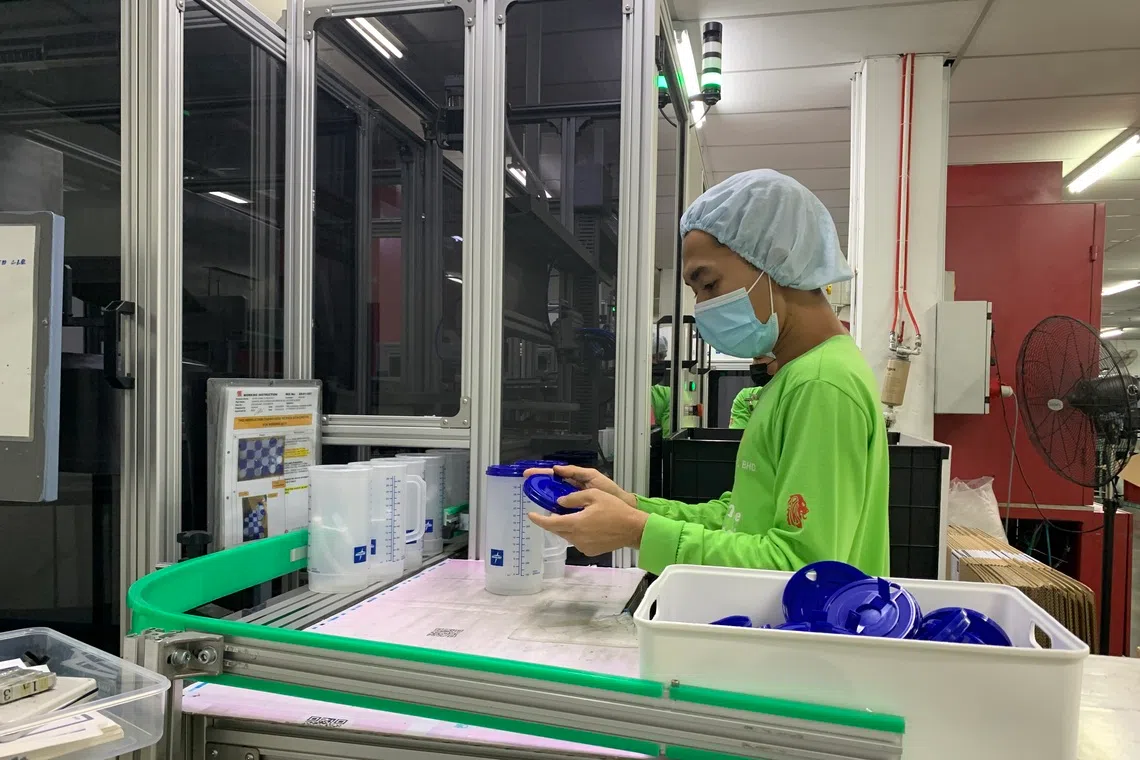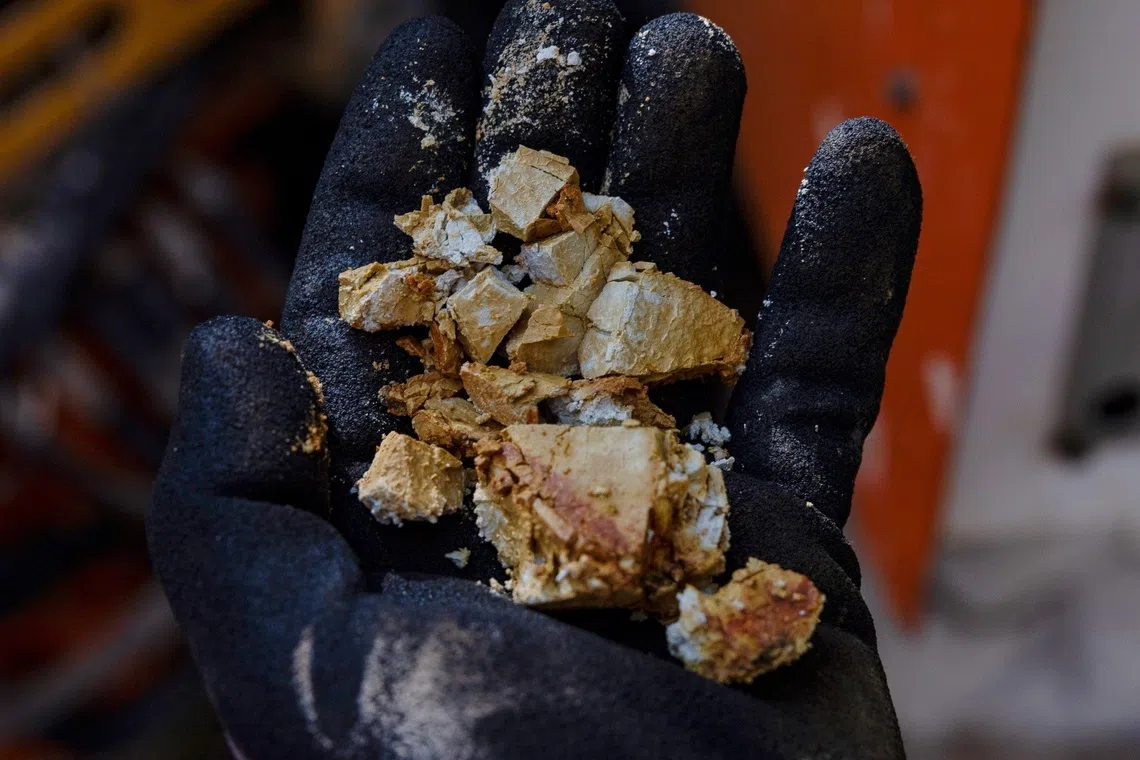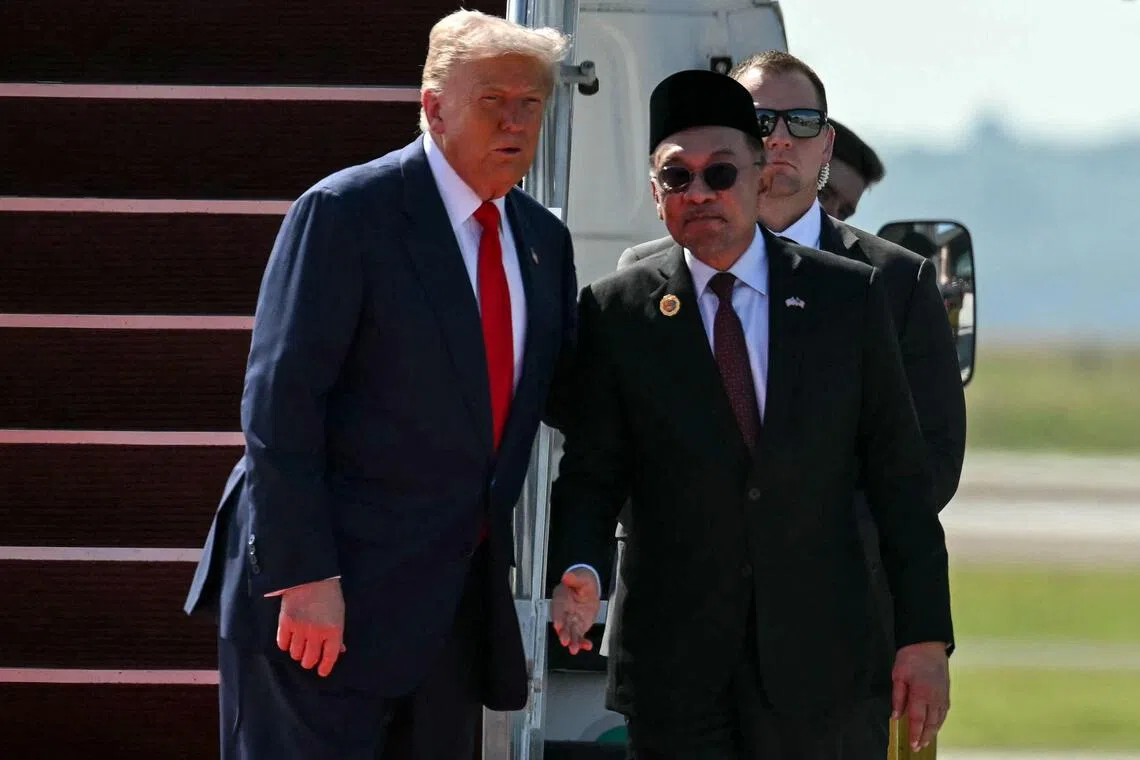Malaysia’s US trade deal: what it means for SMEs, exporters and manufacturers
Pact offers improved access for Malaysian exporters and makes US products more affordable for businesses, consumers

[KUALA LUMPUR] Malaysia’s new trade pact with the US, which grants zero tariffs on over 1,700 product lines worth US$5.2 billion, marks a significant step-up in economic ties and could reshape trade flows across key downstream sectors.
The pact, which elevates the bilateral ties to a Comprehensive Strategic Partnership, was inked on Sunday (Oct 26) between US President Donald Trump and Malaysia’s Prime Minister Anwar Ibrahim on the sidelines of the 47th Asean Summit in Kuala Lumpur.
The agreement covers market access, investment cooperation, supply-chain resilience, critical minerals, regulatory harmonisation and currency policy consultation.
Malaysia’s Investment, Trade and Industry Minister Tengku Zafrul Aziz said the deal offers improved access for Malaysian exporters while making high-quality US products such as medical equipment, computer hardware and machinery more affordable for Malaysian businesses and consumers.
While the tariff concessions are expected to boost Malaysia’s key downstream sectors and attract new foreign investment, economists say the benefits will vary across industries and firm sizes, and that multinational manufacturers are likely to see gains sooner than small and mid-sized suppliers.
Below is an explainer of what the deal covers and who stands to benefit:
What exactly was agreed between Malaysia and the US?

The reciprocal trade agreement between the two countries covers about 12 per cent of Malaysia’s exports to the US.
The US recently overtook China as Malaysia’s largest export market, with bilateral total trade at nearly RM325 billion (S$100.2 billion) last year.
It now stands as Malaysia’s leading source of foreign investment, recording a total of RM32.8 billion in investments in 2024.
SEE ALSO
Which sectors set to benefit the most?

The tariff exemptions cover several major downstream value-added sectors, including:
• Palm oil and downstream oleochemicals • Natural rubber (finished products such as gloves and tyres are excluded) • Cocoa-based food ingredients • Generic and specialised pharmaceuticals • Aerospace precision engineering and components
Analysts expect stronger order visibility and reinvestment momentum in manufacturing hubs in Penang, Selangor, Johor and Sarawak.
UOB senior economist Julia Goh noted that although semiconductors are not covered by tariff exemptions, Malaysia could still gain from alignment with US economic and national security priorities, particularly around investment, compliance and supply-chain trust.
Washington was earlier weighing tariffs of up to 300 per cent on semiconductor imports, a move that could hit Malaysia, currently the world’s sixth-largest chip exporter, with the US as its third-largest market destination.
However, the chip tariff issue was not raised at the bilateral meeting in Kuala Lumpur, as Trump said both countries would deal with US tariffs on semiconductors “at the appropriate time”.
Although the extensive list of zero-tariff products under the agreement appears substantial, most remain subject to limitations, suggesting the overall economic impact will likely be modest, said Barclays economists led by Brian Tan in a note on Oct 29.
Barclay estimates that Malaysia’s tariff exemptions cover about US$12 billion worth of exports to the US, equivalent to 2.8 per cent of the nation’s GDP.
However, about US$11 billion of that trade would still face certain limitations, leaving only around US$1 billion, or 0.2 per cent of GDP, eligible for zero tariffs.
Will SMEs benefit?

Market observers said the benefits will not be evenly felt across all industries, as it will depend heavily on sector positioning.
UOB’s Goh noted that capital-intensive and high-tech industries stand to attract more US investment. But not all small and medium-sized enterprises (SMEs) may benefit unless they produce goods in the eligible tariff-free categories.
“The advantage may tilt towards US and foreign multinationals operating here that import capital equipment and parts from the US,” she told The Business Times.
However, SME groups say supply-chain spillovers are real.
Koong Lin Loong, chairman of the SMEs committee in the Associated Chinese Chambers of Commerce and Industry of Malaysia, said the exemptions will provide breathing room and should have multiplier effects across supporting industries.
“It also (creates) opportunities for Malaysian firms to collaborate with the US in high-technology and digital sectors,” he added.
Of rare earths and critical minerals

A central feature of the deal concerns semiconductor supply chains and critical minerals.
Malaysia has committed not to impose export bans or quotas on rare earths and critical mineral inputs. In doing so, the country gains positioning and likely technology transfer in downstream processing.
Peter Kong, head of research at Kenanga Investment Bank, highlighted that the enhanced cooperation on critical minerals reaffirms Malaysia’s strategic role in global supply chains.
He noted that while zero-rated tariffs provide a significant boost to exports, the exemption is not exclusive to Malaysia, as the US selectively imposes zero-rate tariffs in various areas, with Malaysia’s list covering 1,711 products.
“From a strategic perspective, especially given recent moves by China to tighten export approvals for rare earths, this cooperation places Malaysia firmly in the spotlight,” Kong said in a report on Monday.
Liew Wui Chern, policy analyst at Universiti Tunku Abdul Rahman, said such a deal enables the US to gain supply security at minimal cost.
“Malaysia, in turn, will benefit in the longer run through targeted technology transfer, especially in advanced refining and precision separation – similar to frameworks already established with Japan and Australia,” he added.
Malaysia’s concessions
Preferential access for selected US products, including: • Machinery and advanced manufacturing equipment • Medical devices • ICT hardware • Industrial polymers and processed metals • Food and agricultural goods
Malaysia has also agreed to make a slew of purchases from the US, including: • 30 aircraft, plus a purchase option for 30 additional aircraft; • Semiconductors, aerospace components and data centre equipment with an estimated value of US$150 billion; • 5 million tonnes per annum of liquefied natural gas, valued at up to US$3.4 billion per year; and • Coal and telecommunications products and services, valued at US$204.1 million.
The agreement also further solidifies Malaysia’s role as a vital and trusted partner of the US in the Asia-Pacific.
“Trusted partner”: does it matter?

Malaysia has been formally designated as a “trusted partner” in the US supply-chain diversification strategy, reflecting its pivotal role in supporting American efforts to reduce reliance on single-country sources for critical goods.
This new status underscores Malaysia’s importance in sectors such as rare earths, semiconductors and advanced manufacturing, strengthening bilateral collaboration and opening opportunities for technology transfer and industrial upgrading.
Dr Liew said that, as a trusted partner, Malaysia would benefit from American commitments to transfer advanced and efficient rare earth refining technologies, similar to those shared with Japan and Australia.
This will support higher-quality production and yield, sustaining Malaysia’s long-term competitiveness and reliability in global supply chains.
“In strict terms, this is a win-win agreement. Both sides satisfy their immediate and strategic needs, though the timing and visibility of those benefits will be viewed differently, depending on perspective,” he added.
Non-tariff barriers included
Malaysia will: • Recognise certain US motor-vehicle safety standards; • Streamline halal certification pathways for US food and pharmaceutical exports; • Digitise import licensing processes; and • Expand mutual recognition of product testing and inspections.
These changes reduce compliance costs and shorten lead times.
Malaysia and the US also agreed to maintain consultations on exchange-rate policy.
Taking the cue from similar talks with other countries, UOB’s Goh said this reaffirms that exchange rates are market-determined. “If there was any intervention in forex markets, it would be solely to smooth out excessive volatility in exchange-rate movements to ensure economic stability,” she added.
Decoding Asia newsletter: your guide to navigating Asia in a new global order. Sign up here to get Decoding Asia newsletter. Delivered to your inbox. Free.
Copyright SPH Media. All rights reserved.






